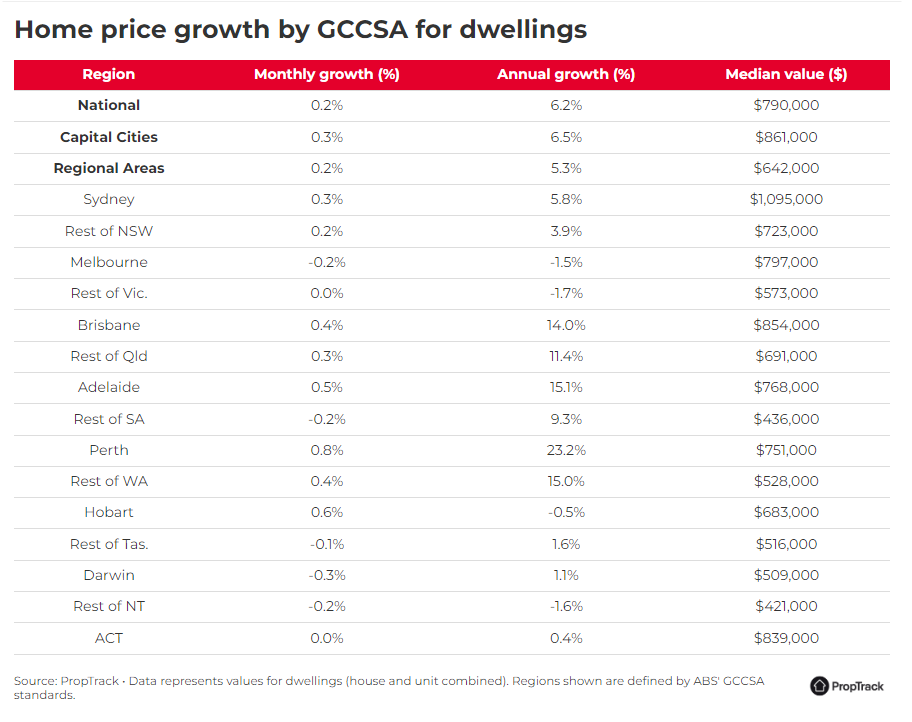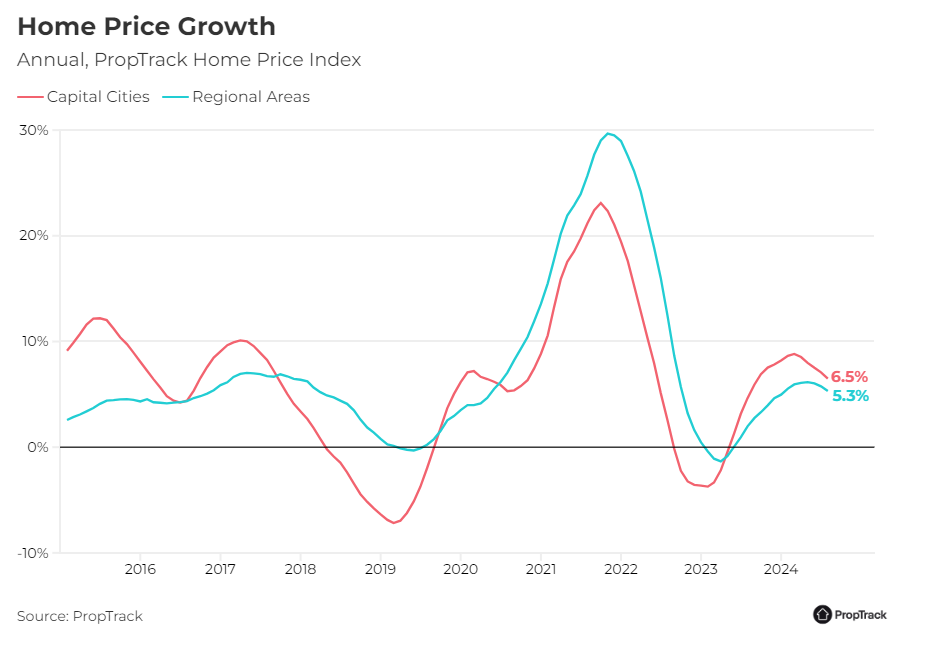

The PropTrack Home Price Index revealed a modest 0.22% increase in national home prices for August, marking the 20th consecutive month of growth.
However, the pace of growth has noticeably slowed, especially during the seasonally quieter winter months.
“Housing demand remains buoyant, defying affordability constraints and fuelling continued growth across much of the country,” said Eleanor Creagh (pictured above), senior economist at PropTrack.
Despite the ongoing price increases, regional and capital city markets are showing significant differences in performance.
See LinkedIn post here.
Among the capital cities, Perth led the charge with a robust 0.79% increase in home prices for August, further solidifying its position as one of the strongest markets in the country.
Perth’s home prices have surged by 23.24% over the past year, reflecting the city’s continued outperformance. Adelaide and Brisbane also posted strong gains of 0.45% and 0.32%, respectively.
In contrast, Melbourne experienced a 0.18% decline in August, marking the fifth consecutive month of falling prices. Melbourne’s home values are now 1.98% lower than they were five months ago and 1.46% below their August 2023 levels.
The trend of capital cities outpacing regional areas continued in August, with prices in regional areas rising by 0.16% over the month, bringing them to 5.32% above August 2023 levels. However, the performance varied widely across regions.
Regional Western Australia (+0.41%) and regional Queensland (+0.26%) led the growth in August, while regional Victoria struggled, with prices down 1.74% over the past year. The disparity between regional areas underscores the varied supply and demand dynamics in different parts of the country.
Affordability constraints and the balance between supply and demand are the primary factors driving the divergence in price growth across different markets.
Perth, Adelaide, and Brisbane have maintained strong growth momentum due to tight supply and robust buyer demand.
“The comparative affordability of homes in Perth and Adelaide, along with tight rental markets, has contributed to persistent strong growth,” Creagh said.
In contrast, Melbourne’s weaker price momentum can be attributed to a higher supply of available listings, giving buyers more choices and reducing upward pressure on prices, PropTrack reported.
Looking ahead, home prices are expected to continue rising as the spring selling season ramps up, but the pace of growth may moderate compared to the faster gains seen earlier in the year.
Strong population growth, tight rental markets, and home equity gains are likely to keep demand buoyant.
However, the expected increase in housing supply, uncertainty around the timing of interest rate cuts, and ongoing affordability challenges could dampen the pace of price growth.
“Home prices are expected to lift as activity ramps up into the spring selling season,” Creagh said. “However, the expected uplift in choice, the uncertainty around the timing of interest rate cuts, and affordability constraints are likely to dampen the pace of price growth from the faster pace recorded in the first quarter of this year.”
Get the hottest and freshest mortgage news delivered right into your inbox. Subscribe now to our FREE daily newsletter.
